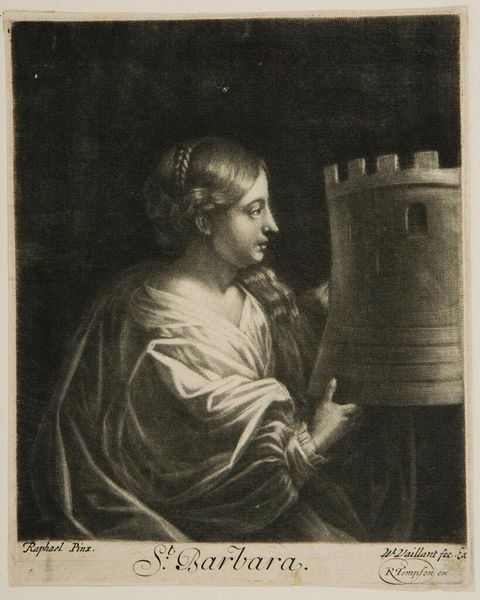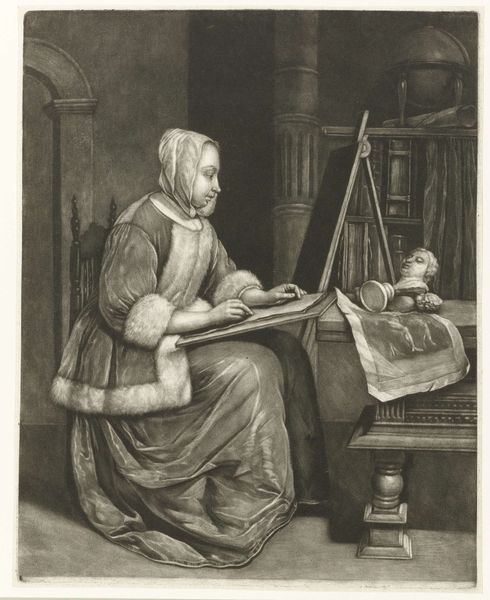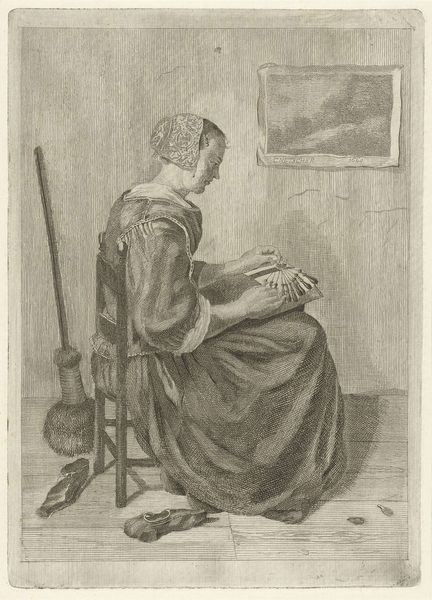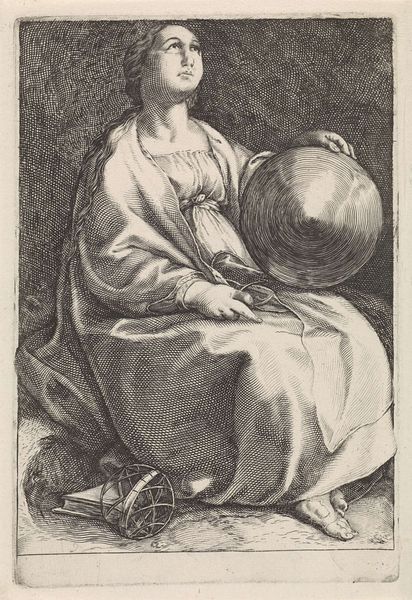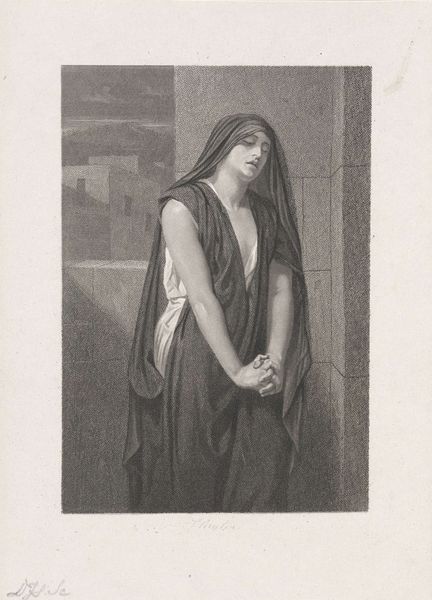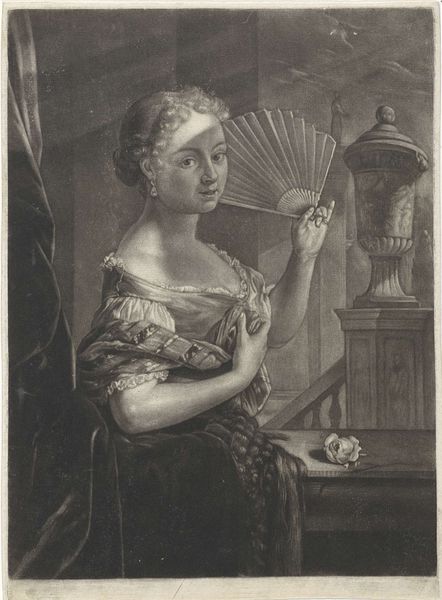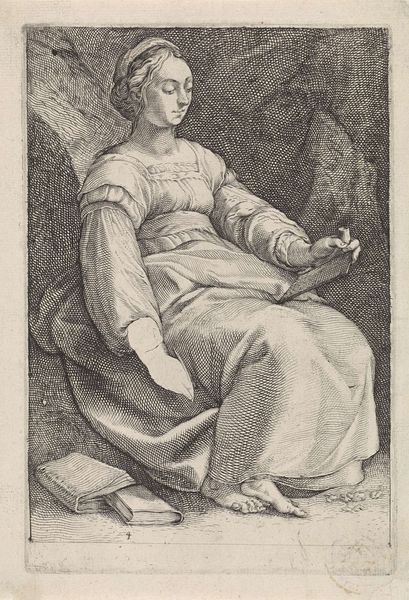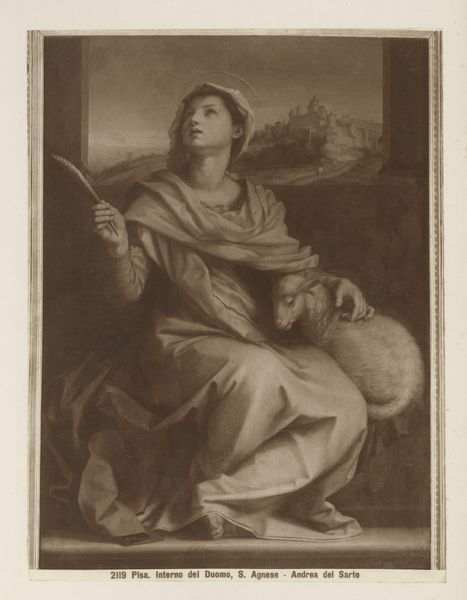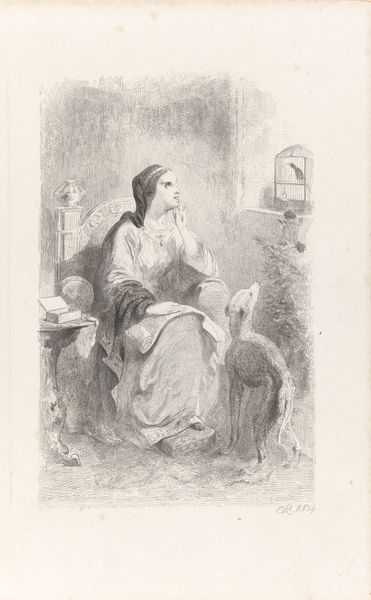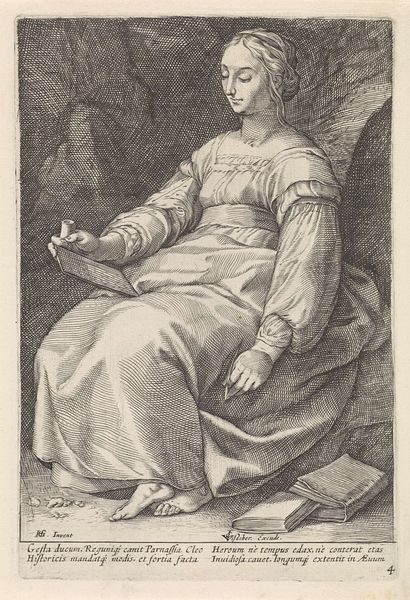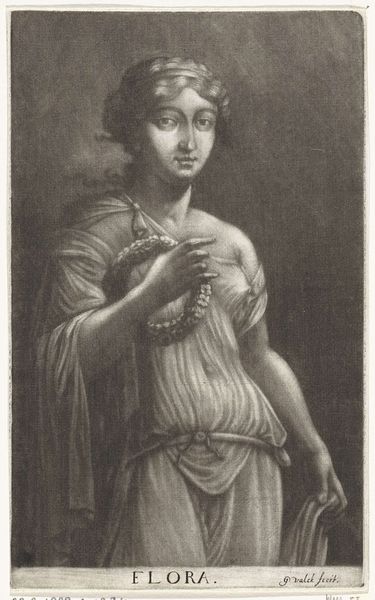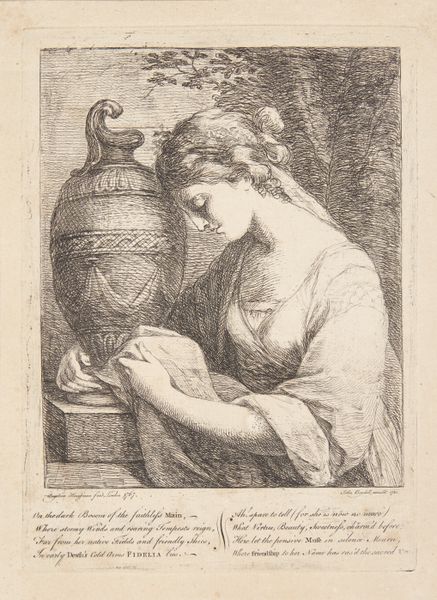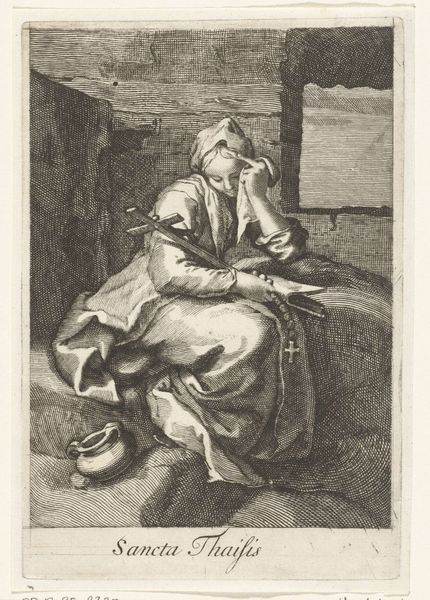
drawing, etching, intaglio, paper, engraving
#
portrait
#
pencil drawn
#
drawing
#
baroque
#
etching
#
intaglio
#
charcoal drawing
#
paper
#
pencil drawing
#
portrait drawing
#
engraving
Dimensions: height 163 mm, width 131 mm
Copyright: Rijks Museum: Open Domain
Curator: Welcome. Today we’re looking at Wallerant Vaillant's "H. Barbara," dating from 1658 to 1677, housed here at the Rijksmuseum. It's an intaglio print on paper, incorporating engraving and etching techniques. What are your initial thoughts? Editor: It has this ethereal, dreamlike quality, almost faded in places. I’m struck by the texture created through the printmaking; you can almost feel the grain of the paper, the pressure of the plate. Curator: Vaillant, known for his contributions to mezzotint techniques, gives us an interpretation of Saint Barbara, often invoked against lightning and fire. Traditionally, her attribute is a tower, which is what we see represented in this portrait. Given the time this portrait was rendered, there may be resonances in class inequality as well. Editor: Yes, the tower's stark geometry juxtaposed with her soft features, draws attention to her pose as she handles what appears to be, at best, a very rough replica of it. Was she holding it? Who was it built? Curator: It's not certain how to read the relationship of Saint Barbara with the tower. Consider how women, and especially unmarried or saintly women, were portrayed within patriarchal structures of the time. Note how that tower confines or empowers depending on perspective. Editor: The materiality of the print itself interests me. Etching, engraving… these processes require skilled labor, painstaking work. It highlights the artistic and artisanal skill necessary to disseminate religious imagery. Was this available only for wealthy consumers? Curator: The reproducibility of prints allowed images, and the ideals they represented, to circulate more widely. Think about the evolving social context: increased literacy rates and religious shifts potentially contributed to the demands for more images of devotion, with the stories of feminine icons playing a pivotal role in the spiritual and intellectual landscape. Editor: So, in essence, what seems like a devotional piece is underpinned by industrial craft production and socio-political conditions concerning access to both labor and these images, too. I wonder, also, how this artwork influenced artistic craft production or challenged pre-existing standards of the profession. Curator: Examining “H. Barbara”, we see not only a religious image but also a record of 17th-century debates around gender, spirituality, and art's role in societal development. Editor: I’ll remember that--seeing art not in a vacuum but intertwined with social history and production. Thank you.
Comments
No comments
Be the first to comment and join the conversation on the ultimate creative platform.
